
How to Properly Cut a Hickory Tree: Essential Tips for Safe and Effective Tree Cutting
Cutting a hickory tree may seem like a simple task, but if not done properly, it can lead to accidents, damage to property, or even harm to the tree itself. 🌿 If you’ve ever wondered about the right technique to hickory tree cut safely and effectively, you’re in the right place! Whether you’re a homeowner looking to clear space or simply curious about tree cutting, understanding the proper method is essential for both safety and success.
In this guide, we’ll walk you through everything you need to know—from selecting the right tools to executing the perfect cuts. This article will not only help you tackle the task confidently but also ensure the health of the surrounding environment. Ready to dive in? Let’s unlock the secrets to cutting a hickory tree like a pro! 🛠️✨
Table of Contents
Toggle🌳 What You Need to Know About Hickory Trees 🌳
Before you grab your chainsaw, it’s essential to understand the unique characteristics of hickory trees. Their dense, hardwood 🌳 and towering height 🌲 can make cutting a hickory tree more challenging than other types of trees. Let’s break down why this matters and how it impacts your cutting process.
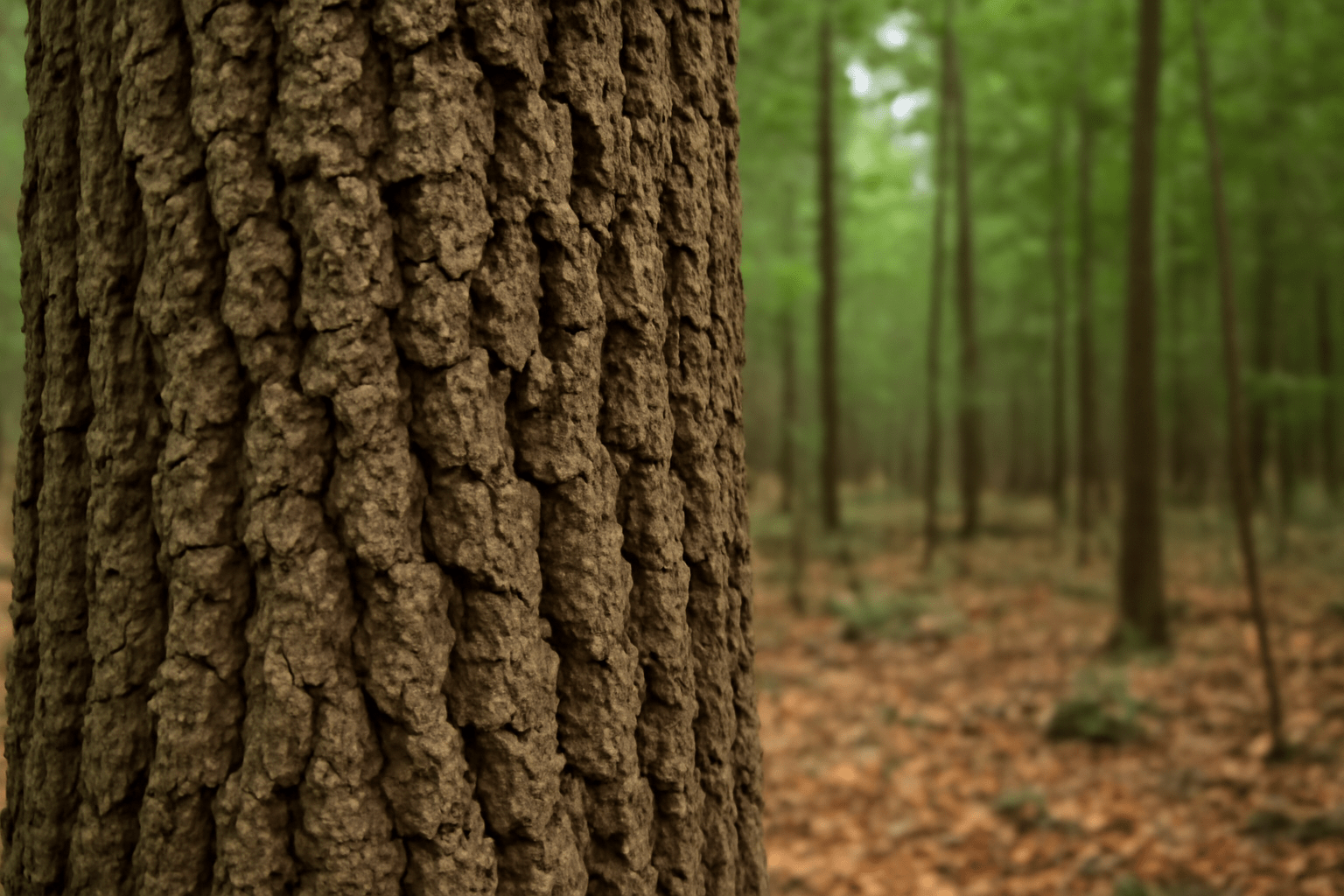
🌿 Why Are Hickory Trees Special? 🌿
Hickory trees are known for their tough, dense wood 🌳, making them a popular choice for furniture, tool handles, and firewood 🔥. However, this same wood can be tough to cut through, requiring more effort 💪 and a sharper tool 🛠️.
- Hardwood: The thick, strong bark and wood can cause chainsaws to struggle 🔩 if not properly maintained 🧰.
- Height and Size: Hickory trees can grow tall—up to 100 feet 🌲! This adds a level of complexity when felling them 🌪️, as you must account for their height 📏 and stability ⚖️.
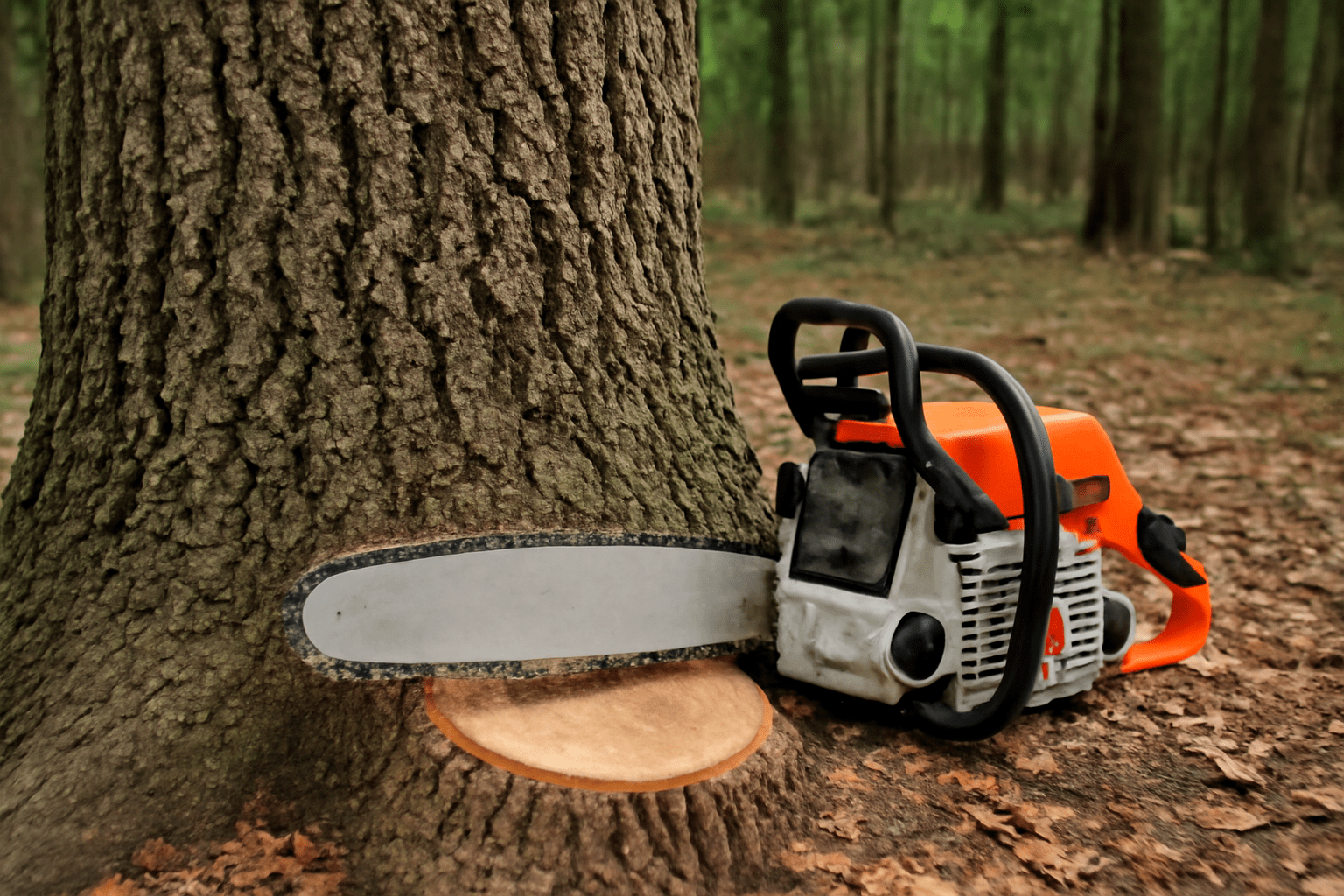
🌱 Challenges of Cutting a Hickory Tree 🌱
Understanding the challenges you’ll face can help you prepare for a smoother cutting process 🌟. Here’s what to look out for:
- Heavy Canopy: A hickory tree’s broad branches 🌿 can create an unpredictable fall 🌳, making it essential to plan your cuts carefully ✂️.
- Potential for Unstable Falls: If the tree is leaning 🌲 or has damaged areas 🌧️, it may fall in an unexpected direction ⬅️. Always assess the lean and plan your cuts accordingly 🛠️.

🛠️ Why Proper Cutting Is Crucial 🛠️
- Health of the Tree: Cutting a hickory tree incorrectly ❌ can harm the surrounding ecosystem 🌎 or stunt the tree’s regrowth 🌱 if you’re planning to leave a stump 🪓.
- Safety: With a challenging tree like hickory, safety is key 🔑. Improper cutting can lead to accidents ⚠️, so understanding the tree’s behavior 🌳 and cutting techniques is crucial 🔧.
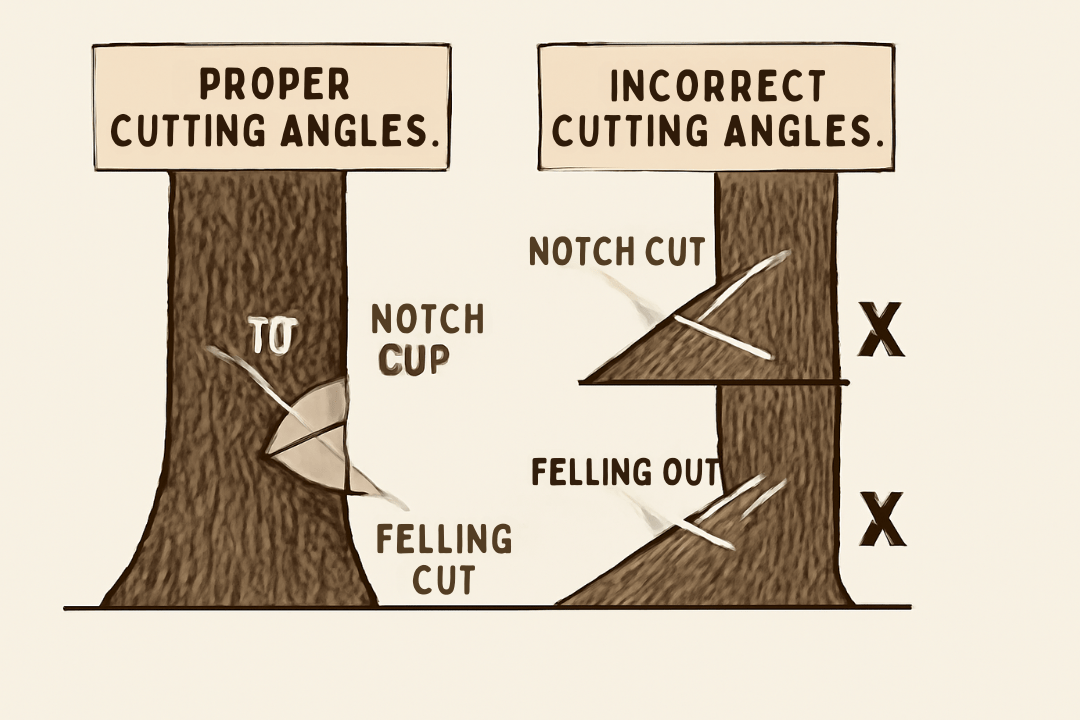
By knowing the unique traits of hickory trees 🌳, you’ll be better prepared to cut them safely and effectively 👍. Next, we’ll dive into the tools 🛠️ you need for a successful hickory tree cut! 🪓
🌳 🪓 Step-by-Step Guide to Cutting a Hickory Tree 🪓 🌳
Cutting a hickory tree requires careful preparation, the right tools 🛠️, and precise steps 📏. Below is a clear, beginner-friendly guide to ensure you cut your hickory tree safely and efficiently 🌳.
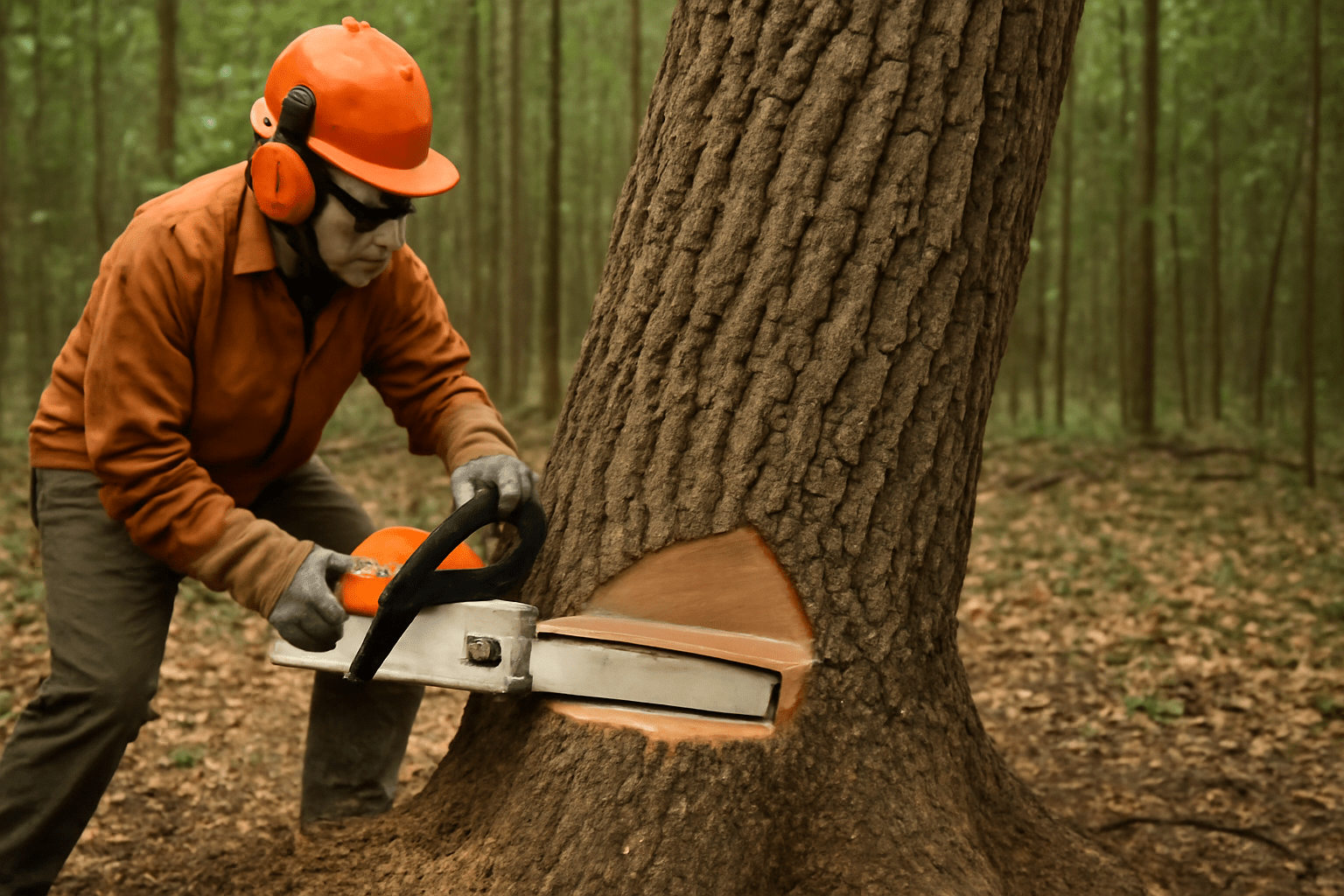
🛠️ 🌿 Preparation is Key: How to Get Ready for Cutting a Hickory Tree 🌿 🛠️
Proper preparation can make all the difference ✨. Before you start cutting, follow this checklist ✅ to ensure you’re fully ready:
- Assess the Tree’s Size, Height, and Location 🌲: Check how tall the hickory tree is 🌲 and its lean direction ↗️. The larger the tree, the more complex the cutting process will be.
- Ensure No Nearby Structures, Power Lines, or Hazards 🏠 ⚡: Make sure there are no obstacles such as buildings 🏠, fences 🚧, or power lines ⚡ in the tree’s fall path. If there are, plan your cuts accordingly to avoid these hazards.
- Secure Necessary Permits 📝: Depending on where you live 🌍, you might need a permit to cut down a tree 📝. Always check your local regulations to avoid legal issues.
- Choose the Right Time of Year for Cutting 🌸 ❄️: The best time to cut a hickory tree 🌳 is during late winter ❄️ or early spring 🌸 when the tree is dormant. This reduces sap flow and minimizes stress on the tree.
🪚 🔧 Essential Tools for Cutting a Hickory Tree 🔧 🪚
Having the right tools 🛠️ will make the job easier and safer. Here’s what you’ll need:
- Chainsaw or Handsaw 🪚: If the tree is large 🌲, a chainsaw is a must. For smaller trees, a handsaw may suffice 🪚.
- Protective Gear 🧤 🪖: Never cut without wearing protective equipment like:
- Helmet for head protection 🪖
- Gloves for grip and hand safety 🧤
- Safety goggles to protect your eyes 👓
- Chaps to protect your legs from chainsaw accidents 👖
- Rope, Wedges, and a Felling Axe 🪓: For larger trees 🌳, ropes and wedges help guide the fall direction ⬇️. A felling axe is useful for adjusting cuts and guiding the tree’s lean.
- Ladder 🪜: If the tree has high branches 🌿 or you need better access, use a sturdy ladder to reach the upper areas 🔝.
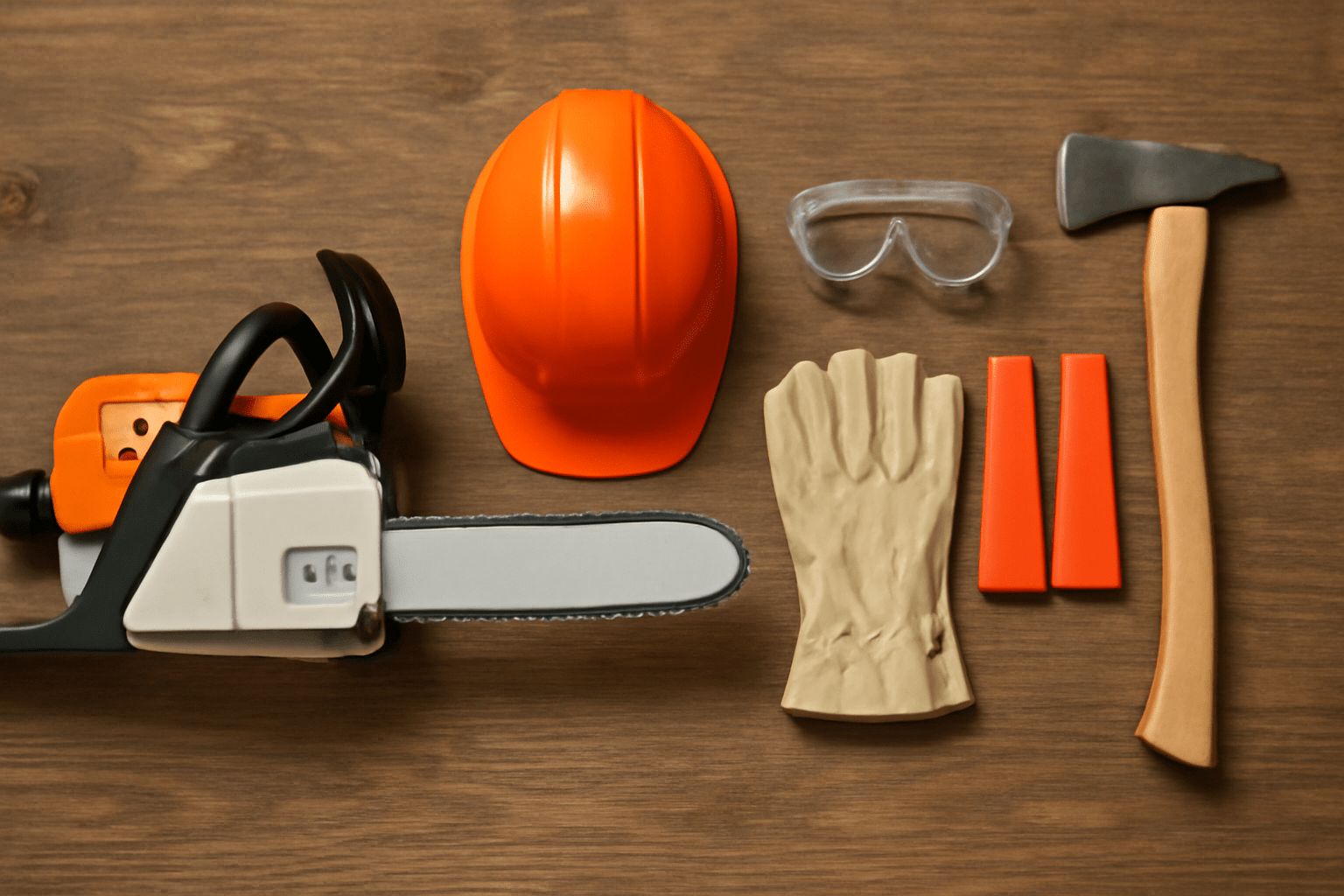
🪵 🌲 How to Cut a Hickory Tree: Step-by-Step Instructions 🌲 🪵
Now that you’re prepared 🎯, let’s walk through the actual cutting process. Follow these steps closely to ensure safety and effectiveness 🛡️:
Step 1: 🧐 🌿 Assess the Surrounding Area 🌿 🧐
Before starting your cuts, survey the area 🧐:
- Clear the Area 🍂: Remove any obstacles like rocks 🪨, branches 🌿, or debris 🍂 that might hinder your movement or cause a tripping hazard ⚠️.
- Escape Path 🏃♂️: Plan and establish an escape route 🚶. This path should be behind the tree 🏃♂️, allowing you to move quickly if the tree begins to fall unexpectedly.
Step 2: ✂️ 🌳 Make the Notch Cut 🌳 ✂️
The notch cut is essential for guiding the tree’s fall 🍃:
- Create a Horizontal Cut ➖: Begin by making a horizontal cut at the appropriate height, typically around chest level 💪.
- Follow with an Angled Cut 🔺: Make a second cut above the first one at a 70-degree angle 🔺, forming a notch. The notch should be about one-third of the tree’s diameter 🌳. This guides the tree’s fall in the desired direction.
Step 3: 🔨 🌲 Make the Felling Cut 🌲 🔨
The felling cut is the final step that will bring the tree down 🌍:
- Cut Slightly Above the Notch ➖: Position your chainsaw about an inch or two above the horizontal notch cut and begin cutting horizontally ➖.
- Use Wedges ⬇️: Insert wedges into the cut to help guide the tree’s fall in the right direction ➡️. Make sure to do this before the tree begins leaning 🏋️♂️.
Step 4: 🌳 🏃♀️ Monitor the Fall 🏃♀️ 🌳
Once the cuts are complete, you must monitor the tree’s fall 🌳:
- Stand at a Safe Distance 🚶♀️: Always move to your escape route 🏃♀️ as soon as the tree starts to lean 🔄.
- Control the Fall 🌳: If the tree doesn’t fall immediately ⏳, use the ropes and wedges to help guide it safely to the ground 🌍.
By following these steps, you’ll cut down your hickory tree 🌳 with confidence and precision 🎯. Always remember to prioritize safety and preparation 🛡️. Up next, we’ll discuss essential safety tips 🚨 to ensure your hickory tree cutting goes smoothly! 😊
🦺 🪓 Safety Tips for Cutting a Hickory Tree 🪓 🦺
When it comes to cutting a hickory tree, safety should always be your top priority ⚠️. By following the right safety measures, you can protect yourself, others, and your property 🏡. Here are essential safety tips to keep in mind at every stage of the cutting process.
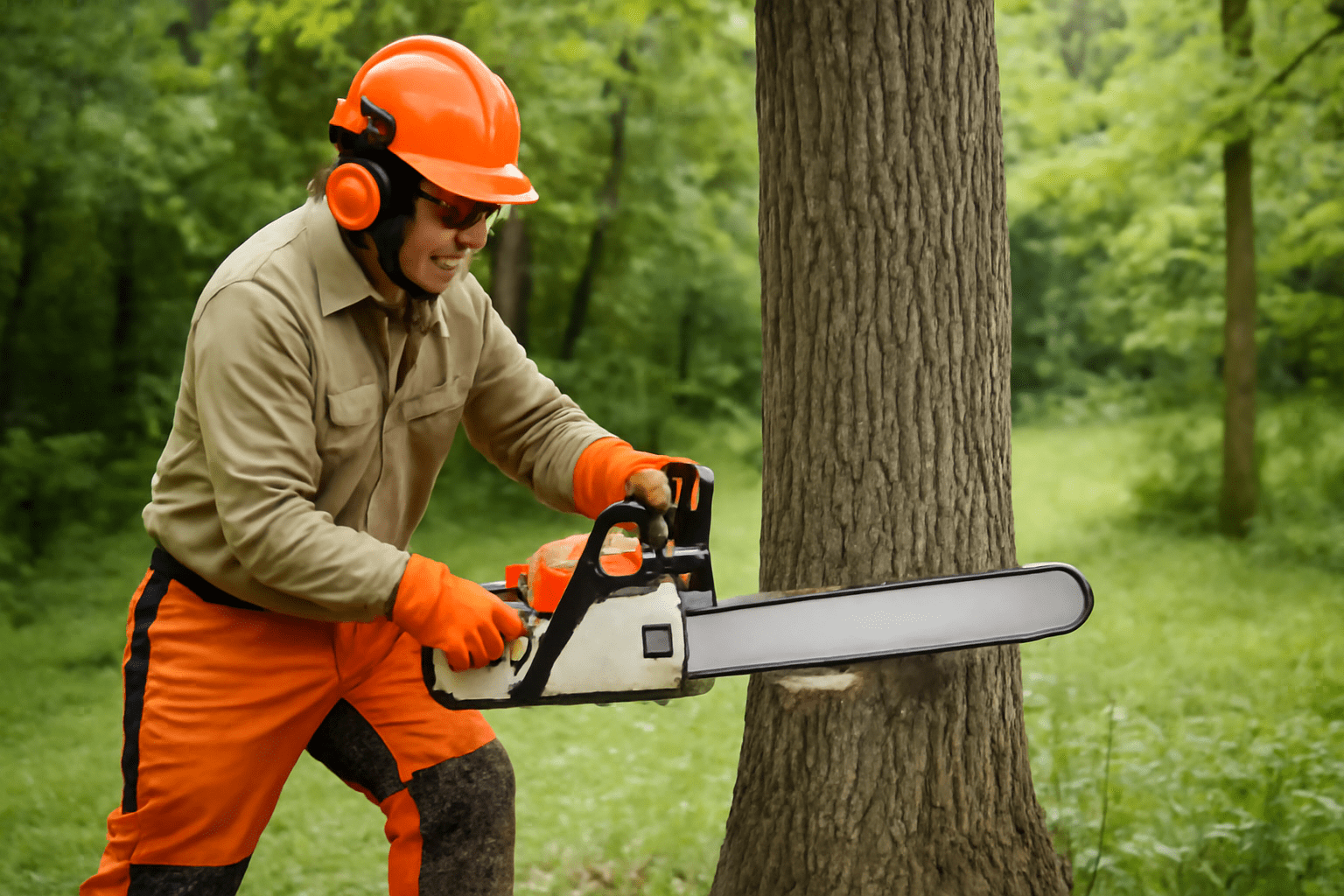
🛡️ 🧑🔧 Safety First: How to Protect Yourself While Cutting a Hickory Tree 🧑🔧 🛡️
Personal Protective Equipment (PPE)
Protecting yourself with the right gear 🧰 is crucial when cutting a hickory tree 🌳. Always wear the following PPE:
- Helmet 🪖: A sturdy helmet protects your head from falling debris 💥 and potential accidents ⚠️.
- Gloves 🧤: Ensure a secure grip on your chainsaw or handsaw 🪚 with durable gloves. They’ll also protect your hands from sharp edges ✂️.
- Safety Glasses 👓: Protect your eyes from flying debris and sawdust with safety goggles or glasses 🦸♂️.
- Chaps 👖: Chainsaw chaps protect your legs from injury if the saw slips or kicks back ⚡.
🪓 🌳 Before Cutting: Preparing Safely 🌳 🪓
Preparation is key to a safe cutting experience ✅. Follow these steps to ensure a safe work environment 🏞️:
- Check the Stability of the Tree 🌲: Inspect the tree for signs of instability ⚖️, disease, or leaning that could affect its fall 🌪️. A leaning tree might require extra care or professional assistance 🧑🔧.
- Ensure You Are at Least Two Tree Lengths Away from Structures 🏠: Make sure there are no nearby structures 🏢, power lines ⚡, or fences 🚧 that could be in the tree’s fall path ⬇️. If there are, plan your cuts carefully to avoid causing damage 🔧.
- Clear the Area 🍂: Remove any debris, rocks 🪨, or obstacles 🏔️ from the cutting area. It’s essential to have a clear workspace for movement 🚶 and to avoid tripping hazards ⚠️.
⚠️ 🪚 During Cutting: Stay Focused and Safe 🪚 ⚠️
- Never Cut Above Shoulder Height ⬆️: Always keep the chainsaw or saw at shoulder height or lower to maintain control 🛠️ and prevent accidents 🚨. Cutting at higher levels can lead to fatigue 😓 and improper cuts ✂️.
- Make Cuts in the Direction of the Tree’s Natural Lean 🌲: A tree will naturally lean in one direction ↘️. Cut in that direction to guide the tree’s fall safely 🚶♂️ and predictably. Avoid cutting against the lean ❌, as it can cause the tree to fall unpredictably ⚡.
🚶♂️ 🌳 After Cutting: Clearing and Finishing Safely 🌳 🚶♂️
- Clear the Area Quickly 🚶♀️: Once the tree has fallen, move away from the tree 🌳 and any branches 🌿 that might pose a risk ⚠️. The area should be free of people and animals 🐶 before proceeding 🏃♀️.
- Don’t Attempt to Cut the Tree Alone if It’s Too Large or Risky ❌: If the tree is large 🌲 or in a precarious position ⚖️, don’t attempt to cut it on your own 🤦♂️. Always have a second person to help 👫 or consider hiring a professional 🧑🔧 for larger, more complex trees 🌳.
By following these safety tips 💡, you’ll ensure that your hickory tree cutting project goes smoothly 👍 and without incident 🚨. Next, we’ll dive into how to troubleshoot common issues 🛠️ that may arise during the cutting process! 😊
🔧 🪓 Dealing with Common Challenges When Cutting a Hickory Tree 🪓 🔧
Even with proper preparation and the right tools 🛠️, cutting a hickory tree 🌳 can present challenges. Here are some common problems you might face and how to troubleshoot them effectively 🔧.

🛠️ ⚙️ Troubleshooting: What to Do If You Encounter Problems ⚙️ 🛠️
🌳 Problem #1: Tree Doesn’t Fall as Expected 🌳
Sometimes, despite your best efforts, the tree may not fall as planned 🚫. This can happen if the tree’s natural lean is off ⬅️ or if the cuts aren’t properly aligned. Here’s how to handle it:
- Use Wedges to Guide the Tree in the Right Direction ⬇️: If the tree isn’t falling in the direction you want, insert wedges into the felling cut 🪓. This helps control the direction of the fall and ensures the tree falls safely.
- Ensure Your Notch and Felling Cuts Are Aligned Correctly 🔧: Double-check that your notch cut and felling cut align 🔄. Misalignment can cause the tree to lean in an unexpected direction, making it difficult to control its fall 💥.
🌲 Problem #2: Tree is Too Large or Tall 🌲
If you’re dealing with a very large or tall hickory tree 🌳, cutting it down safely can become complicated 😓. Here’s what you should consider:
- Consider Hiring a Professional Tree Cutter 👷♂️: Large or tall trees 🌳 often require specialized equipment and experience 💡. If the tree poses significant risk ⚠️ or is in a challenging location 📍, it’s best to hire a professional to ensure the job is done safely 🛠️.
🪚 Problem #3: The Chainsaw Won’t Cut Through the Wood 🪚
Hickory trees 🌳 are known for their dense, hard wood 💪, which can put a strain on your chainsaw 🛠️ if not properly maintained. Here’s how to fix this:
- Use a Sharper Chain 🔪: If your chainsaw is struggling ⚡, the chain might be dull 😬. A sharp chain makes cutting much easier and more efficient 🔥.
- Switch to a More Powerful Saw 🏋️♂️: If the tree is particularly thick or difficult to cut through 🔲, consider using a more powerful chainsaw designed for tough hardwoods like hickory 🪓.
By troubleshooting these common issues 💡, you’ll ensure that your tree-cutting process goes smoothly and safely 🛡️. In the next section, we’ll cover what to do after the tree has fallen 🌳, including how to handle the stump and the surrounding area 🌿. 😊
🌱 🌳 Aftercare: What to Do After Cutting a Hickory Tree 🌳 🌱
Once the hickory tree has been cut down, the work isn’t quite over ⏳. Proper aftercare ensures the area stays safe, clean, and that you can make the most of the tree’s wood 🌳. Here’s what to do next.
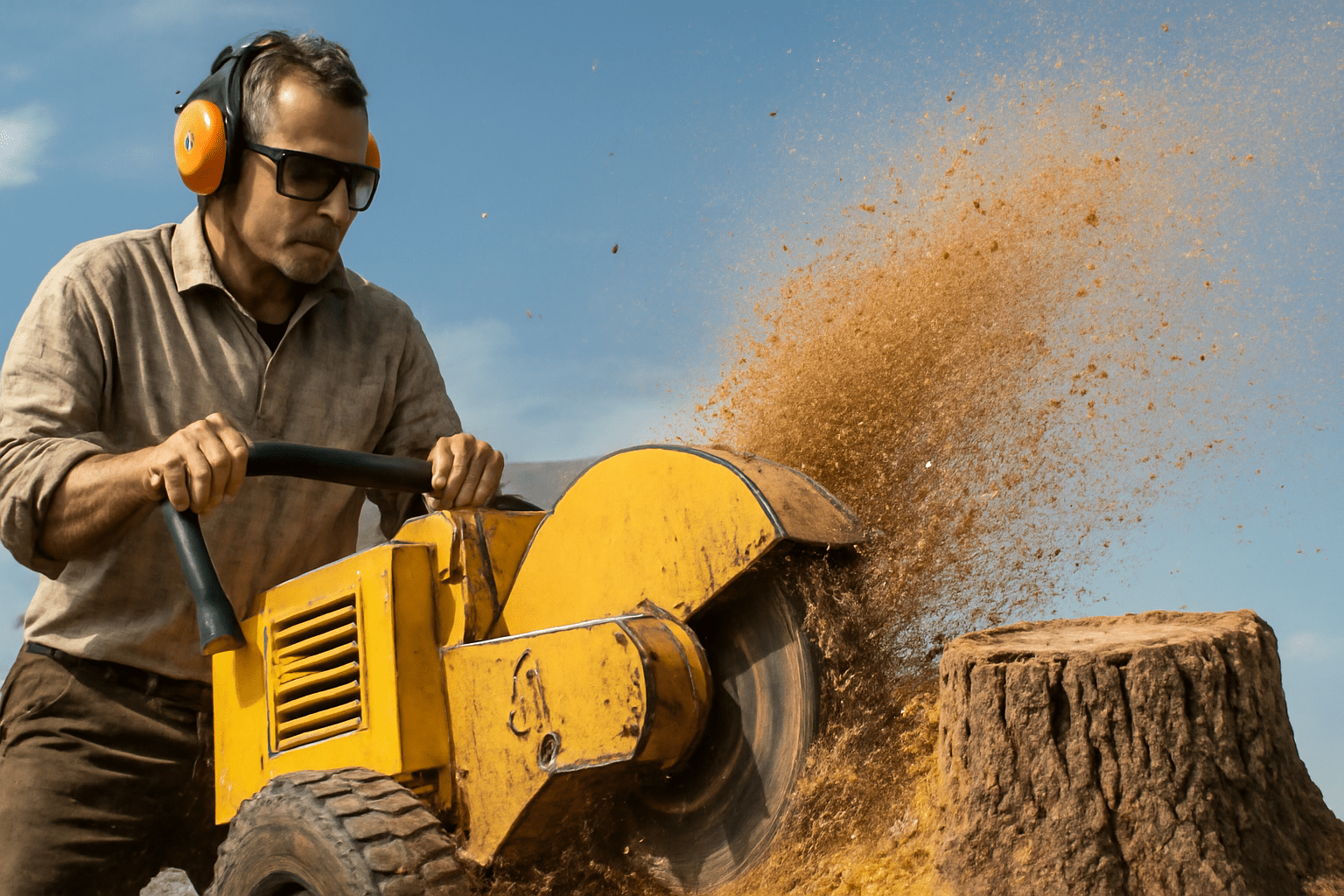
🪵 🌿 How to Care for the Tree’s Stump and the Area Around It 🌿 🪵
🌳 Stump Removal: Grind or Remove the Stump if Needed 🌳
After felling the tree 🌳, you’ll be left with a stump. Depending on your plans for the area, you may want to remove it. Here are a couple of options:
- Grind the Stump 🪚: Use a stump grinder to grind the stump below ground level 🌍. This helps clear the area and prevent it from becoming a tripping hazard ⚠️.
- Remove the Stump 🚜: If grinding isn’t an option, you can dig out the stump 🏞️ or use a chemical stump remover 🧪. This process can take some time ⏱️, so plan accordingly.
🌱 Preventing Regrowth: Use Stump Killer or Herbicide 🌱
If you don’t want the hickory tree 🌳 to sprout again 🌿, treat the stump with a stump killer or herbicide 🧴. This will stop the stump from growing new shoots 🌱. Apply it according to the manufacturer’s instructions to ensure effective regrowth prevention 🛑.
🍂 Cleaning Up: Properly Dispose of Branches and Debris 🍂
Once the tree is down 🌳, you’ll have branches 🌿 and other debris 🍂 to deal with. Clean up the area thoroughly 🧹 to keep your yard safe and tidy:
- Cut Branches into Manageable Pieces ✂️: If you’re not using the branches for firewood 🔥 or projects, cut them into smaller pieces for easier disposal 💼.
- Dispose of Debris 🚮: Depending on your local waste regulations 🗑️, you can either dispose of the branches in yard waste collection 🚛 or use them for composting 🌱.
🔥 🌳 What to Do with Hickory Tree Wood 🌳 🔥
Hickory wood 🌳 is durable and versatile, making it perfect for a variety of projects 🔨. Here’s how to make the most of the wood from your hickory tree:
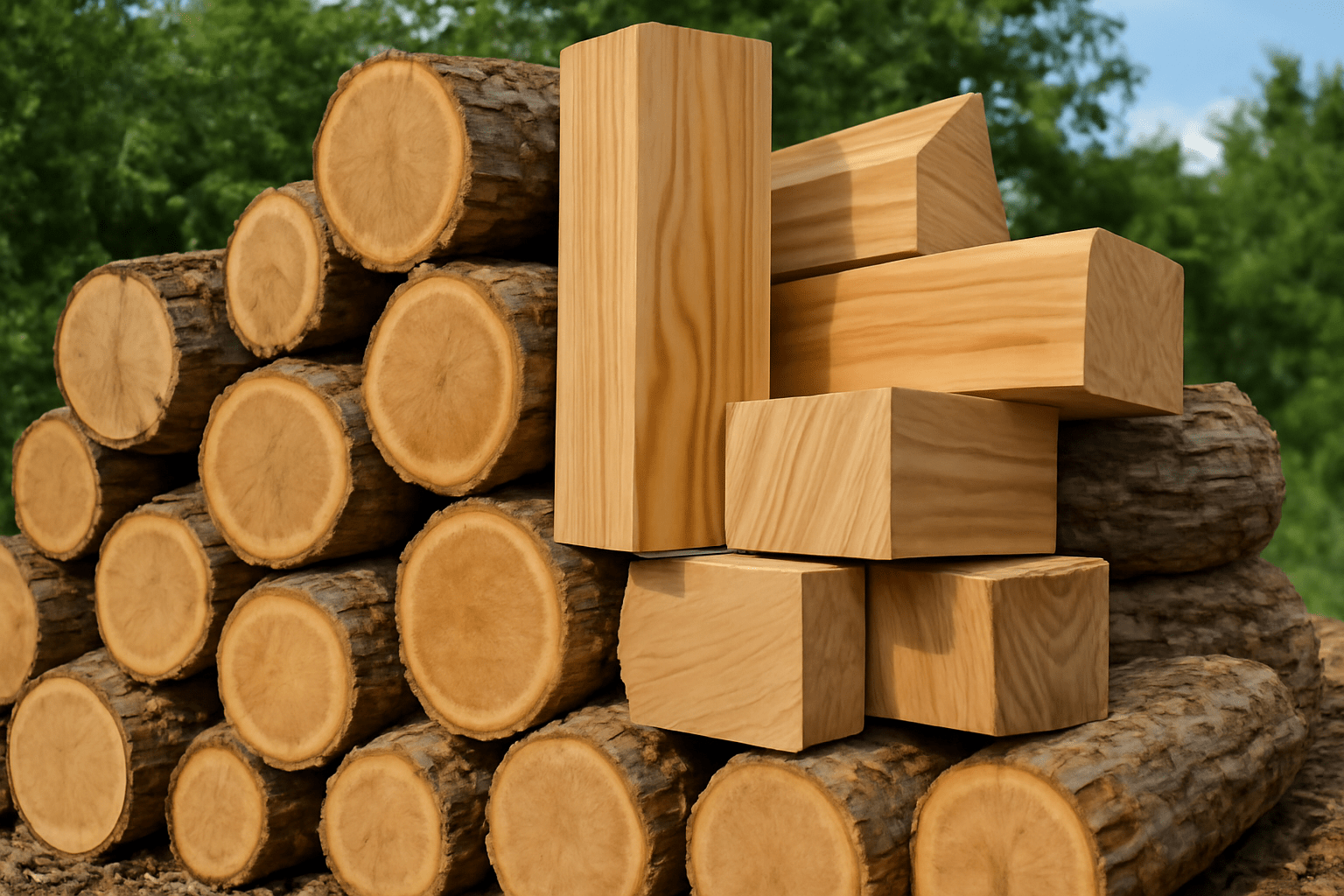
🔥 Firewood: Cut into Logs for Burning 🔥
Hickory is a hardwood 🪵, which makes it excellent for burning 🔥. Cut the trunk into logs and store them in a dry area 🌬️ for use as firewood. Hickory burns hot and slow 🔥, making it a great choice for keeping your fire going throughout the winter ❄️.
🪑 Furniture: Use Hickory Wood for Crafting Durable Furniture 🪑
Hickory is known for its strength 💪 and durability, which makes it ideal for crafting high-quality furniture 🛋️. Consider using the wood for chairs, tables, or cabinets 🗄️. Its rich grain and hard texture will give your furniture a beautiful, rustic look 🌾.
🛠️ Woodworking Projects: Consider Using the Wood for DIY Projects 🛠️
If you enjoy woodworking 🔨, hickory is an excellent choice for a variety of DIY projects 🛠️. You can use it to make cabinets 🗄️, flooring 🌳, cutting boards 🍽️, or even small decorative pieces 🎨. The dense wood takes stain and finishes beautifully 🎨, allowing you to create long-lasting and functional pieces 🛠️.
With these aftercare tips 💡, you’ll be able to properly manage the stump 🌳, dispose of debris 🍂, and make use of the valuable hickory wood left behind 🪵. Next, let’s answer some frequently asked questions ❓ to clarify any lingering doubts you might have! 😊
🌳 🪓 Final Thoughts 🪓 🌳
Cutting a hickory tree 🌳 can be a rewarding and fulfilling task when done safely 🛡️ and with the right techniques 🔧. By following the proper steps 📋, preparing effectively ✅, using the correct tools 🛠️, and prioritizing safety 🚨, you can ensure that the process is as smooth as possible. From assessing the tree 🌳 and making precise cuts ✂️ to caring for the stump 🪓 and using the wood for future projects 🔨, every step plays a crucial role in achieving your goals 🎯.
Remember, if the tree is too large 🌲 or the situation feels risky ⚠️, don’t hesitate to reach out to a professional 👷♂️. Tree cutting is a serious task 🛠️ that requires experience, so it’s always best to err on the side of caution ⚖️.
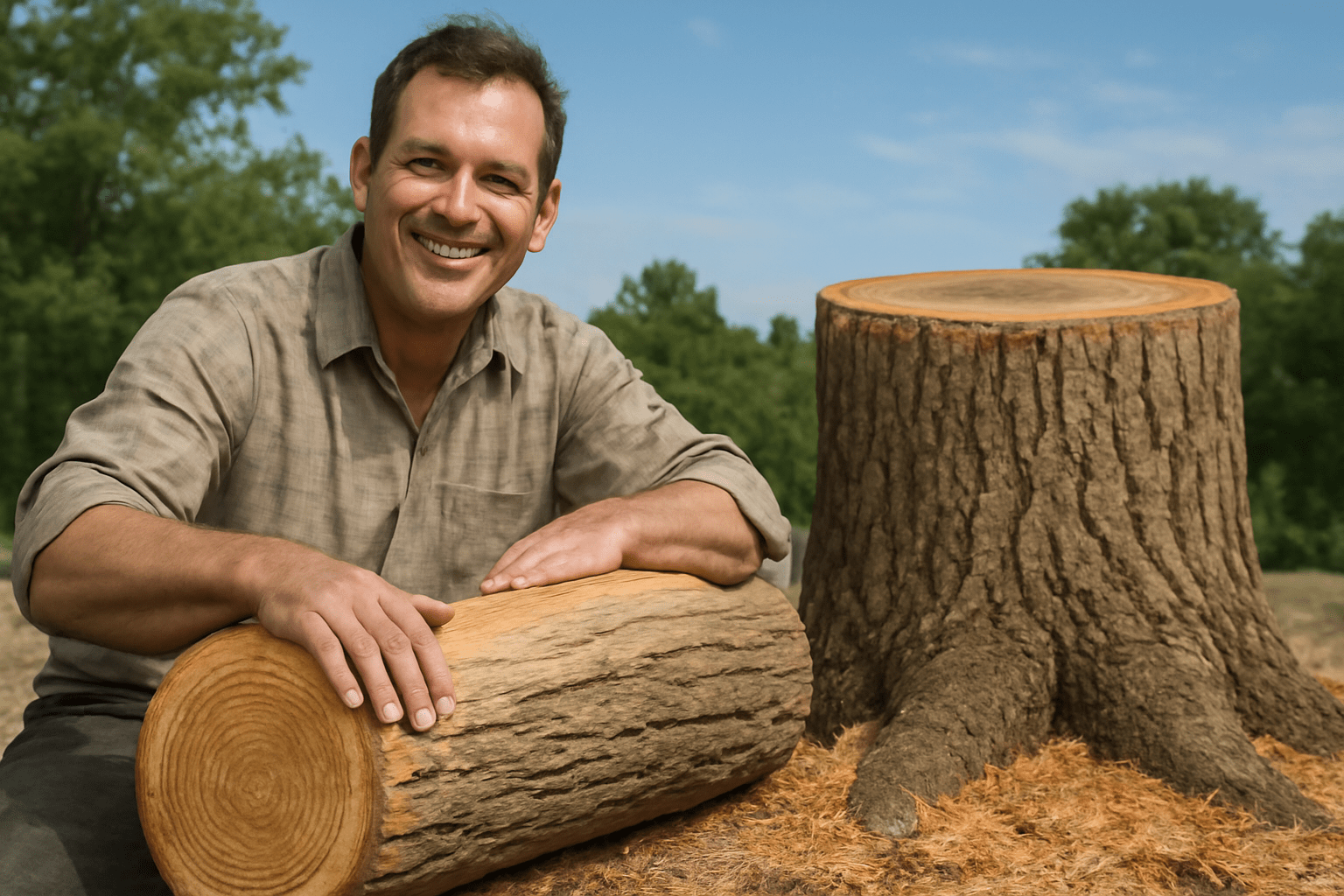
Now that you know exactly how to cut a hickory tree 🌳 safely, you can approach the job with confidence 💪. Whether you’re clearing space 🏡, using the wood for projects 🛠️, or simply managing your yard 🌿, this guide will help you handle your hickory tree cutting with ease 🪓 and expertise 💡.
Stay safe 🛡️, and happy tree cutting! 😊
Frequently Asked Questions (FAQ)
When is the best time to cut a hickory tree?
The best time to cut a hickory tree is during late winter or early spring when the tree is dormant. This minimizes sap flow and reduces stress on the tree, making the cutting process smoother and less damaging to the environment.
What tools do I need to cut a hickory tree?
To cut a hickory tree, you’ll need a chainsaw (or a handsaw for smaller trees), protective gear such as a helmet, gloves, goggles, and chaps, wedges to guide the fall, and a rope for added control if necessary. Make sure your chainsaw is sharp for better efficiency.
How do I know if the tree is safe to cut?
Check for stability, disease, or signs of rot before cutting. If the tree is leaning or has broken branches, it might be unstable. For large or risky trees, it’s safer to consult a professional tree cutter.
What should I do if the tree doesn’t fall as expected?
If the tree doesn’t fall as planned, use wedges to guide it in the right direction. Also, double-check the alignment of your notch and felling cuts to ensure they are properly positioned.
Can I cut a hickory tree by myself?
You can cut a small to medium-sized hickory tree by yourself if you have the right tools and experience. However, for large or tall trees, it’s recommended to hire a professional to ensure safety and proper execution.
How do I prevent regrowth after cutting a hickory tree?
To prevent regrowth, apply a stump killer or herbicide to the cut stump. This will stop new shoots from emerging and prevent unwanted saplings from growing around the stump.
How do I remove a hickory tree stump?
You can remove a hickory tree stump by using a stump grinder, which grinds it down to below ground level. Alternatively, you can dig it out or use chemicals to break it down. Be patient, as this process can take time.
What can I do with the wood from a hickory tree?
Hickory wood is excellent for burning as firewood due to its dense, slow-burning properties. It’s also perfect for woodworking projects, like making furniture or crafting durable kitchen items. Consider using the wood for DIY projects like flooring, cabinets, or decorative pieces.
